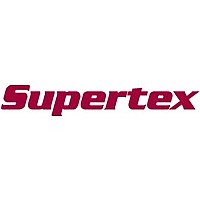HV9931DB2 Supertex, HV9931DB2 Datasheet - Page 2

HV9931DB2
Manufacturer Part Number
HV9931DB2
Description
LED Lighting Development Kits LED DRIVER DEMOBOARD
Manufacturer
Supertex
Datasheet
1.HV9931DB2.pdf
(14 pages)
Warning!
Working with this board can cause serious bodily harm or
death. Connecting the board to a source of line voltage will
result in the presence of hazardous voltage throughout the
system including the LED load.
The board should only be handled by persons well aware of
the dangers involved with working on live electrical equip-
ment. Extreme care should be taken to protect against elec-
tric shock. Disconnect the board before attempting to make
any changes to the system configuration. Always work with
another person nearby who can offer assistance in case of
an emergency. Wear safety glasses for eye protection.
Connection Instructions
Step 1.
Carefully inspect the board for shipping damage, loose
components, etc, before making connections.
Step 2.
Attach the board to the line and load as shown in the diagram.
Be sure to check for correct polarity when connecting the
LED string to avoid damage to the string. The board is short
circuit and open circuit proof. The LED string voltage can
be anything between zero and 40V, though performance will
suffer when the string voltage is substantially lower than the
target of 40V. See the typical performance graphs.
Step 3.
Energize the mains supply. The board can be connected to
mains directly. Alternatively voltage can be raised gradually
from zero to full line voltage with the aid of an adjustable AC
supply such as a Variac or a programmable AC source.
Principles of Operation
The HV9931 topology can be viewed as a series connection
of two basic power supply topologies, (1) a buck-boost
stage as first or input stage, for purpose of converting AC
line power into a source of DC power, commonly known as
the DC bus, having sufficient capacitive energy storage to
maintain the bus voltage more or less constant throughout
the AC line cycle, and (2) a buck stage as second or output
stage for powering the LED string, stepping down the DC
bus voltage to the LED string voltage in order to produce a
steady LED string current.
The output or buck stage is designed for operation in
continuous conduction mode (CCM), operating with about 20
to 30% inductor current ripple. This amount of ripple serves
the needs of the HV9931 peak current controller which relies
on a sloping inductor current for setting ON time, and is of an
acceptable level to high brightness LEDs. Duty cycle is more
or less constant throughout the line cycle as the DC bus
Supertex inc.
●
1235 Bordeaux Drive, Sunnyvale, CA 94089
2
Special Note:
The electrolytic capacitor carries a hazardous voltage for an
extended time after the board is disconnected. The board
includes a 1MΩ resistor placed across the electrolytic ca-
pacitor which will slowly discharge the capacitor after dis-
connection from line voltage. The voltage will fall more or
less exponentially to zero with a time constant of about 100
seconds. Check the capacitor voltage before handling the
board.
voltage and LED string voltage are more or less constant
as well. Duty cycle and bus voltage do adjust in response to
changes in line or load voltage but are otherwise constant
over the course of a line cycle. With the HV9931, OFF time is
fixed by design, being programmed by an external resistor,
whereas ON time adjusts to a more or less constant value,
being under control of the HV9931 peak current regulator.
The input or buck-boost stage is designed for operation
in discontinuous conduction mode (DCM) throughout the
range of line and load voltage anticipated. This can be
accomplished by making the input inductor sufficiently small.
A well known property of the DCM buck-boost stage, when
operated with constant ON time and constant OFF time, is
that input current is proportional to input voltage, whether
in peak value or average value. This results in sinusoidal
input current when the input voltage is sinusoidal, thereby
giving unity power factor operation when operating from the
rectified AC line voltage.
When operated in the anticipated range of line and load
voltage, the MOSFET ON time will be under control of the
output stage current controller, which turns the MOSFET
off when sensing that the output inductor current has
reached the desired peak current level as programmed by
a resistive divider at the CS2 pin. Under certain abnormal
circumstances such as initial run-up and line undervoltage,
which both could lead to the draw of abnormally high line
current, ON time is further curtailed by the action of the CS1
comparator, which monitors the input stage inductor current
against a threshold. This threshold can be a simple DC level
or be shaped in time as is performed on the demo board. In
particular, when shaping the CS1 threshold with the shape of
the rectified AC line input voltage waveform, the line current
will be bounded by a more or less sinusoidal line current
envelope which results in sinusoidal input current for low line
and other abnormal conditions.
●
Tel: 408-222-8888
●
www.supertex.com
HV9931DB2v1












